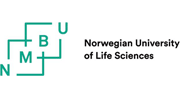Mirex
Traded as: Mirex; Dechlorane; Perchloropentacyclodecane; Paramex; Bichlorendo; Perchlorodihomocubane.
What is it? Organochlorinated carcinogenic insecticide, classified as persistent organic pollutant (POP) and banned by the Stockholm Convention of 2001.
Use (purpose): predominantly in the United States, South America and South Africa.
- Ants and cockroaches eradication
- Fighting insect pests in tobacco, ornamental plants, banana trees and citrus trees.
- Flame retardant for plastics, rubber, paint and paper as well as for electrical appliances between 1959 and 1972.
Mirex has a big persistency in the environment, approximately 10 years, being transported al large distances from its production site. Presently it is found also in Northern Africa, Canada, the Arctic, and the Pacific Ocean etc. Due to its removal from production in 1972, the environmental concentrations are very low, below limits, but its effect cumulates with other pesticides' effect on the environment.
Present status: Forbidden for production, sale and use in the countries having signed the 2001 Stockholm Convention.
In Romania: Mirex was not used directly yet it may be found in plastic items, rubber, paper paint and varnishes as well as in electrical appliances produced from 1959 to 1972 and imported from countries where Mirex was industrially used.
Health effects:
- Acute effects: it irritates the skin, the eyes, the digestive system, induces nausea, vomiting and diarrhoea. Malaise, headaches, anxiety. Excitant for the central nervous system with symptoms such as tremor, paraesthesia, ataxia, confusion, coma, respiratory failure and death.
- Chronic effects: Carcinogenic.
- Target organs: nervous system, liver, thyroid, lungs and kidneys. Carcinogenic for animals (liver, thyroid, adrenal glands cancer) and probable occupational carcinogenic for man.
Lethal dose: from 0.5 to 1 g/kg body weight.
Contamination sources:
- Food: especially meat, including fish and venison.
Useful links:






